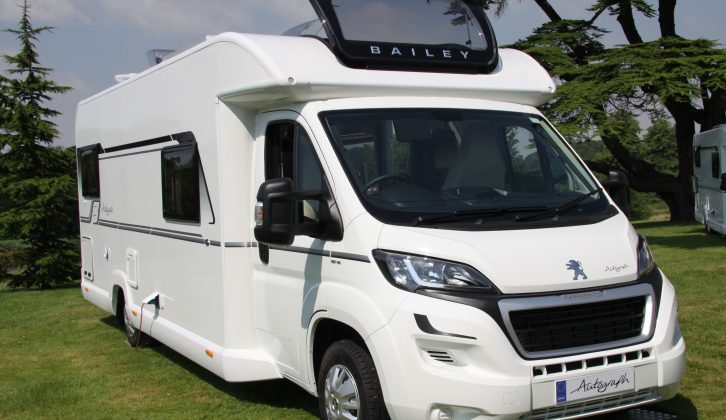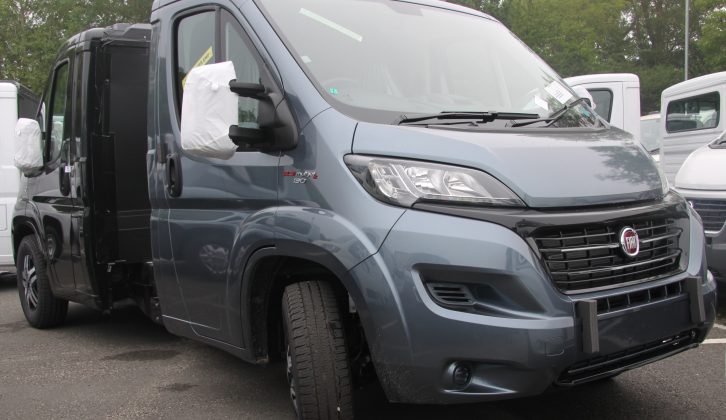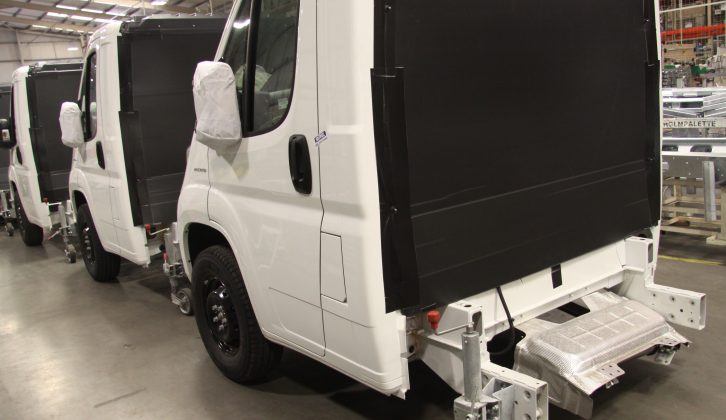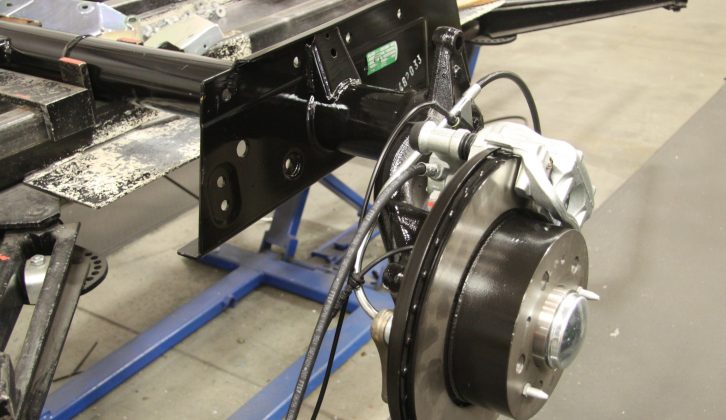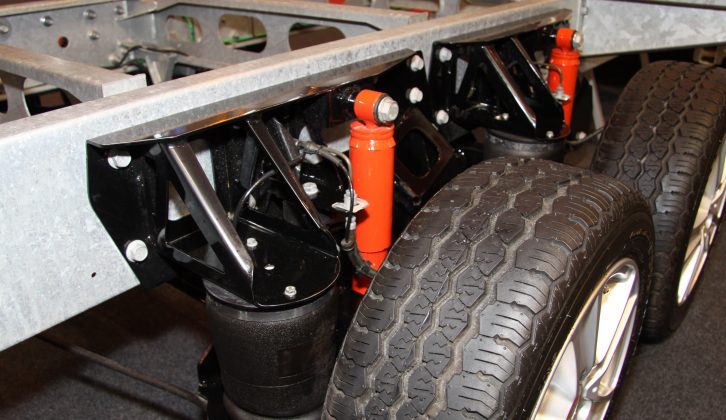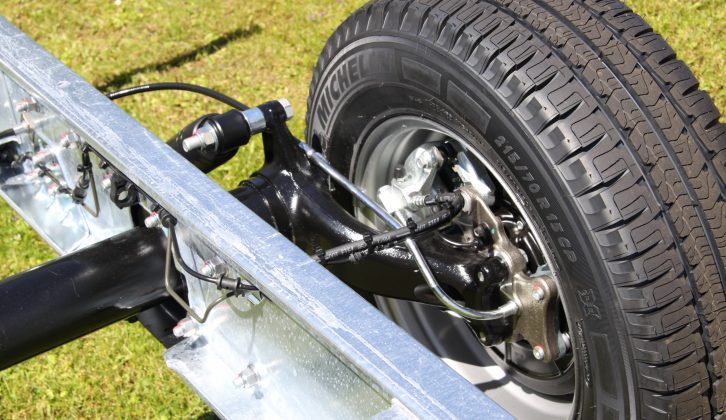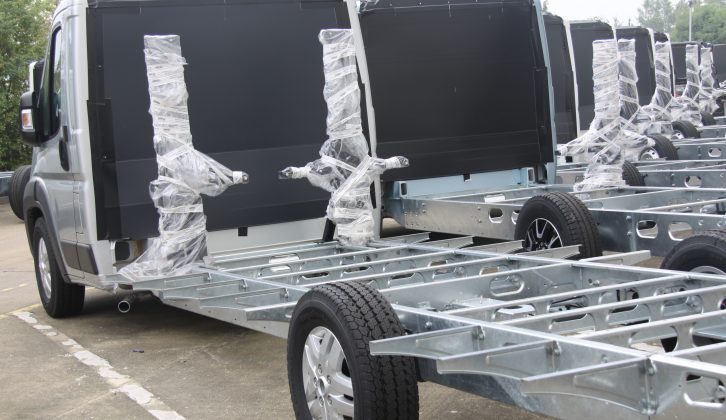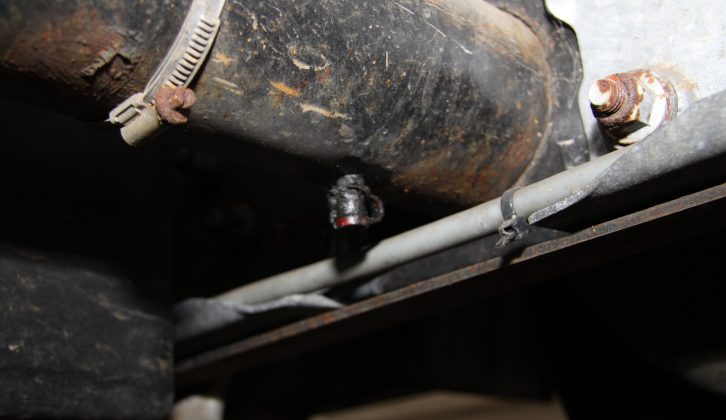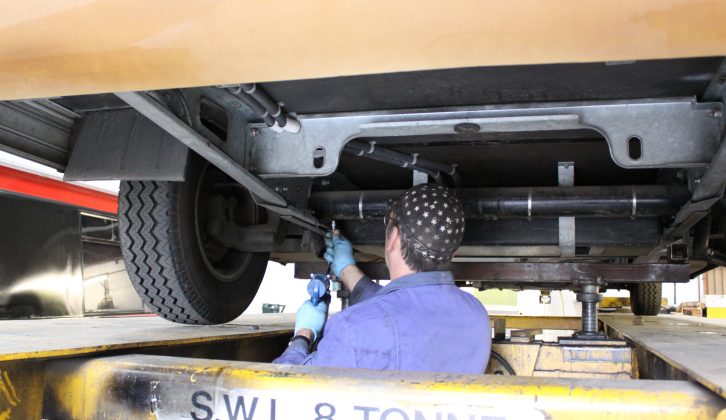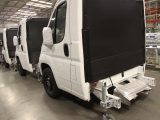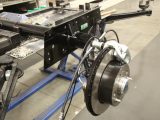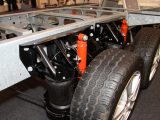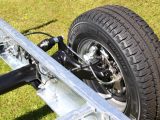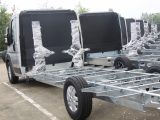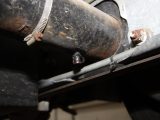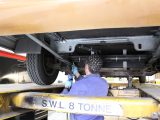AL-KO has manufactured many thousands of vehicles over almost 40 years of building chassis conversions, its torsion bar axle being almost unique within the leisure industry.
But how does it work? As the wheel passes over a bump, the torsion bars within the axle tube (basically a metal rod) twist, returning to its original preset position as it is passed. This, combined with shock absorbers, allows a low-line axle set-up that is ideal for motorhomes, providing not only a low entrance line, but also superb handling for the driver.
In addition to the many thousands of motorhomes on the road, the same designs of chassis and axles are used in the commercial AMC (Auto Motive Chassis) conversions, which run up hundreds of thousands of kilometres in a short space of time and where maintenance is probably less likely.
Lightweight chassis rails are hot-dip galvanised, giving long-life corrosion protection. These arrive from the German parent company for assembly, and are constructed to the required specification on a jib before the addition of a French-made axle (from a sister company), combined with the base vehicle manufacturer’s rear hubs and disc brake assembly.
The low floor or load height makes these chassis ideal for horseboxes, emergency command vehicles, mobile libraries, exhibition and catering units, transporters, box vans and recovery vehicles, catering vehicles and, of course, motorhomes. That’s just a few of the applications for this chassis.
Servicing and care
In terms of servicing, guidance is provided in the handbook, which suggests that the axle should be greased every 20,000km or 12 months, whichever comes first. Each side of the axle will require three to four squirts of grease into each nipple, to keep everything inside the axle tube properly lubricated, or until resistance in the pump is felt.
“AL-KO recommends use of the following grease for lubricating the bearings on the axle tube: Klüber Stabutherm GH 461 or Fa CONDA – Cardex 3746 SP.” It might be old technology, but a hand grease gun is sufficient. However, this must take place when the axle is unladen, that is, with the motorhome raised and safely supported with stands under the chassis, so the axle is free of weight. The grease nipples can be found on the lower side of the axle tube, pointing downwards one either side and protected by a plastic cap.
At no time should the motorhome be jacked up using this tube. So if at any time post-warranty, you are using a non-franchise garage, do warn them of this fact.
It’s also worth noting that AL-KO chassis lubrication would not be included in the base vehicle manufacturer’s scheduled service criteria. Regarding other service requirements, the chassis components do not need any servicing and unless the vehicle is involved in a collision or is damaged through misuse while in operation, it is unlikely that any premature failure will occur.
When checking for maintenance-free axles (that is, no grease nipples), these can be identified by the AL-KO axle type plate, which is located on the right-hand axle housing and will have a ‘CA’ designation.
Included are AL-KO Air Premium X2 and X4 air suspension and ALC Level Controlled axles, as these are equipped as standard with the maintenance-free torsion bar spring axle.
AL-KO chassis lubrication would not be included in the base vehicle manufacturer's scheduled service criteria
